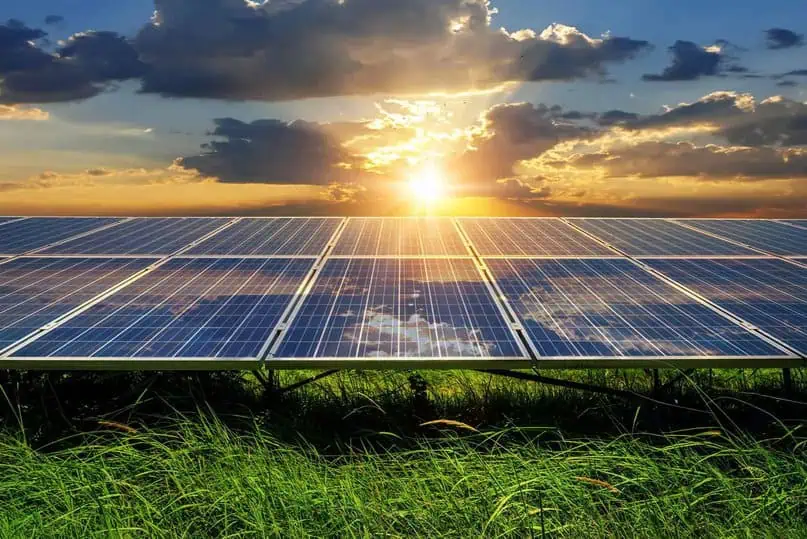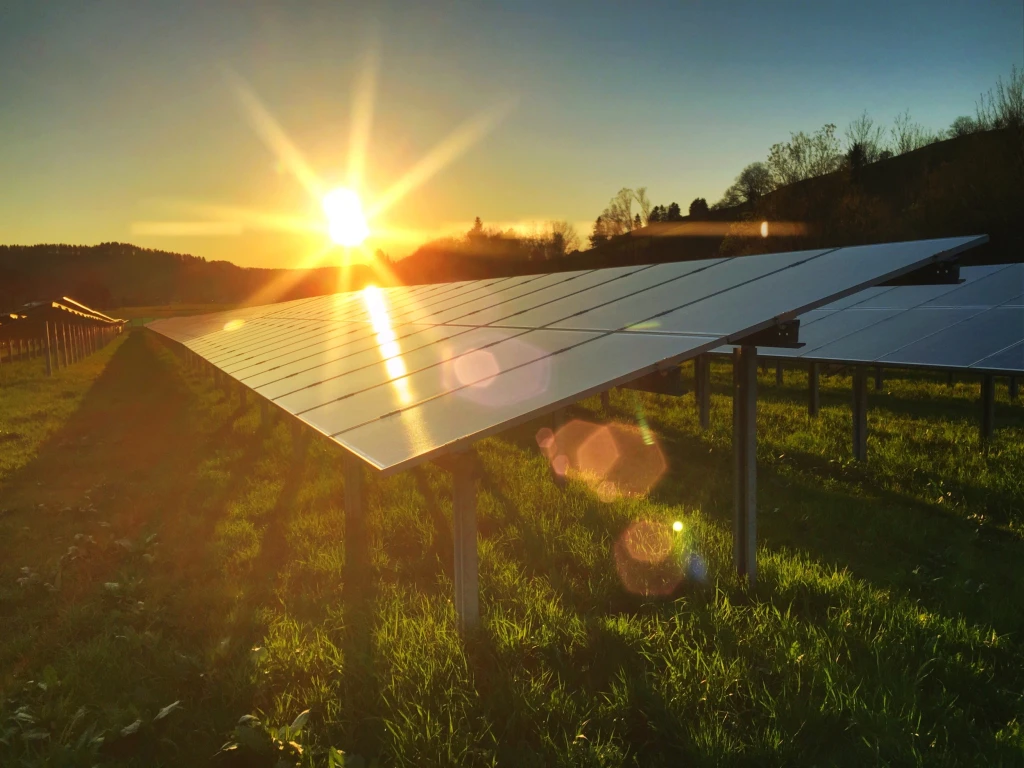
If you live on the Big Island, you already know the story: electricity costs are among the highest in the nation. That’s why more Hawai‘i families are choosing solar — not just to cut bills, but to take control of their energy future. But one of the first questions we hear at BlueSky Energy Hawaii is: “How many solar panels do I really need for my home?”
The answer depends on several key factors, and because every Big Island home is unique, there’s no one-size-fits-all system. Here’s a simple guide to help you understand what goes into sizing your solar system — and why working with a Hawai‘i-born solar company makes all the difference. Contact us today!
What Are Solar Panels And How Do They Work?
Solar panels turn Hawai‘i’s sunshine into usable electricity. Each panel is made up of tiny cells that capture sunlight and create power. That energy first comes through as direct current (DC), which then flows into an inverter to change it into alternating current (AC) — the kind your home runs on every day.
With the right setup, solar can handle everything from your lights and fridge to high-demand appliances like AC units or water pumps — all while lowering your electric bill and keeping your home powered by clean, local energy.
Curious about the basics? Take a look at our full guide: How Solar Panels Work: A Simple Explanation for Big Island Homeowners
Key Factors That Affect How Many Panels You Need
When it comes to sizing a solar system for your Big Island home, there’s no single “right” number of panels. Several factors come into play — from how much energy your family uses to the amount of sunshine your roof gets each day. Here’s a closer look at the most important considerations:
Your Household Energy Usage
The best way to begin sizing your solar system is by looking at your Hawaiian Electric (HELCO) bill. Each statement shows your monthly electricity use in kilowatt-hours (kWh). Since energy habits change with the seasons — more air conditioning in summer, more lighting in winter — reviewing at least 6 to 12 months of bills will give you the clearest picture of your average use.
- Smaller homes (300–500 kWh/month): about 8–12 panels
- Medium homes (500–800 kWh/month): about 12–20 panels
- Larger homes (800+ kWh/month, with AC, pools, or EVs): 20+ panels
As a rule of thumb, the higher your energy consumption, the larger your solar array will need to be in order to cover your usage and maximise savings.
Big Island Sunlight & Location
Hawai‘i enjoys some of the strongest solar potential in the nation, but conditions can vary depending on where you live on the Big Island. Areas like Hilo and Puna are cloudier and rainier, which means homeowners may need more panels to produce the same energy. On the other hand, Kona and Kohala are drier, so fewer panels are needed for equivalent output. In upcountry regions, the cooler temperatures actually help solar panels work more efficiently.
- Hilo & Puna: Cloudier and wetter, slightly lower solar production.
- Kona & Kohala: Bright, dry conditions allow fewer panels to meet demand.
- Upcountry areas: Cooler weather boosts panel efficiency.
Across the island, homes typically receive 4.5–6 peak sun hours per day, making the Big Island an ideal place to go solar.
Roof Size, Orientation & Shade
Your roof is another major factor in determining how many panels you can install and how much energy they’ll produce. A general guideline is that each kilowatt of solar (about 3–4 panels) requires around 100 square feet of roof space. Roof direction matters too: south-facing roofs are optimal for maximum sunlight, but east- and west-facing rooftops can still work well with smart system design.
- Space: Roughly 100 sq. ft. needed per kilowatt of solar (3–4 panels).
- Direction: South-facing is best, but east/west layouts are still effective.
- Shade: Trees, poles, or nearby buildings may reduce efficiency by 20–40%.
At BlueSky Energy Hawaii, we go beyond generic calculators. We use in-house design software and 3D roof modelling to create a custom plan that captures the most sunlight possible.
You can also read our full article: Best Direction for Solar Panels: Maximising Sun Exposure on Your Big Island Roof
Your Energy Goals
The right system size also depends on what you want to achieve with solar. Some families simply want to reduce their monthly electricity bills, while others aim for complete energy independence. Future plans should also be considered, such as adding an electric vehicle, pool, or new appliances that may increase your power use.
- Lower bills: Systems sized to offset your average HELCO charges.
- Energy independence: Solar plus battery storage for backup power.
- Future growth: Extra capacity for EVs, home expansions, or higher usage.
By clarifying your goals, we can design a system that meets your needs today while also preparing you for tomorrow.
Want to understand how energy consumption affects solar sizing? Read our post: Understanding Your Energy Consumption: Key to Optimal Solar Sizing in Hawaii
Panel Efficiency & Technology
Lastly, the type of solar panel you choose influences how many you’ll need. Higher-efficiency panels generate more power per square foot, which is especially helpful if your roof space is limited.
On the Big Island, we often recommend monocrystalline panels because they deliver strong performance in Hawai‘i’s hot, humid climate and continue producing reliably for decades.
How to Calculate How Many Solar Panels Your Big Island Home Needs

Figuring out the right number of solar panels isn’t guesswork — it’s about matching your home’s energy needs with the amount of sunshine your roof can capture. Here’s a clear breakdown of how it works:
Step 1 – Review your electricity usage
Your HELCO bill lists your monthly power use in kilowatt-hours (kWh). This number is the foundation for sizing your system. To get the clearest picture, look at 6–12 months of bills, since your energy use changes throughout the year. For example, you may see higher numbers in the summer if you rely on air conditioning, or during the holidays when more lights and appliances are in use.
Example: A Big Island family might average around 600 kWh per month.
Step 2 – Estimate solar production on the Big Island
Solar production isn’t the same everywhere. Thanks to our island’s strong sunlight, 1 kW of solar panels produces about 130–150 kWh per month.
Homes in sunny Kona or Kohala may be at the higher end of that range, while homes in cloudier Hilo or Puna may see slightly less. Higher-elevation homes often benefit from cooler temperatures, which can actually make panels more efficient.
Step 3 – Calculate your system size
Now it’s time for some simple math:
System Size (kW) = Monthly Usage (kWh) ÷ Average Solar Production per kW
Example: 600 kWh ÷ 140 = about 4.3 kW system size needed.
Step 4 – Convert system size into number of panels
Residential solar panels today usually range from 350W to 450W each. To find out how many panels you’ll need, divide your system’s wattage by the panel’s wattage.
Example: A 4.3 kW system is 4,300 watts. Using 400W panels: 4,300 ÷ 400 = about 11 panels.
Step 5 – Adjust for real-world conditions
No system performs at 100% all the time. Shade from trees or poles, wiring losses, dust, and cloudy weather can reduce production by 15–20%. To make sure you still generate enough energy year-round, it’s wise to oversize your system slightly.
Example: 4.3 kW × 1.2 = about 5.1 kW recommended, or roughly 13 panels.
At BlueSky Energy, we don’t just crunch the numbers — we use local climate data and advanced 3D roof modelling to design a system that fits your home perfectly. That way, you’ll know your panels are set up to capture the most sunlight possible and deliver the savings you expect.
Choosing the Right Solar Partner on the Big Island — Why Work With BlueSky
The quality of your solar system depends on two things: the equipment you select and the team that installs it. Both matter equally when it comes to performance, safety, and long-term savings.
At BlueSky Energy Hawaii, we only work with trusted solar panel brands proven to handle Hawai‘i’s heat, humidity, and heavy rainfall. The right panels should deliver strong, reliable output for decades — not just a few years. While cheaper options may look appealing upfront, they often lead to lower efficiency and higher maintenance costs over time.
That’s why we recommend a site evaluation before you commit. By looking at your roof, shading, and energy use, we can design a system that’s built specifically for your home — not a cookie-cutter template.
Ready to go solar the right way? Contact BlueSky Energy Hawaii today for a free, no-pressure consultation. Let’s design a system that saves you money, protects your home, and powers your Big Island future with clean energy.
Conclusion
Switching to solar on the Big Island isn’t just about lowering your electric bill — it’s about choosing a system that truly fits your home and lifestyle. From energy usage and roof space to local sunlight conditions and plans, the right design makes all the difference.
At BlueSky Energy, we’ve spent over a decade helping Hawai‘i families size and install solar systems that deliver long-term value. Our team combines technical expertise with local knowledge to ensure your panels perform at their best — today and for years to come. If you’re ready to explore solar, we’d love to walk you through your options and design a system that’s honest, reliable, and built around you.
FAQs
How do I figure out how many panels I’ll need?
The best starting point is your monthly electricity usage, shown in kilowatt-hours (kWh) on your HELCO bill. Divide that number by the average monthly output of one panel, and you’ll get a rough idea. The exact number depends on your panel wattage, roof space, and how much sun your property gets.
How many panels does the average Big Island home use?
A typical household using around 400–600 kWh a month may need 10–15 panels of about 400W each. Larger homes or those with high-power appliances like A/C, pools, or EV chargers will likely need 20 or more.
Can a house run completely on solar power?
Yes — if your system is sized to cover your total usage and you include battery storage or net metering. With the right design, you can reduce or even eliminate reliance on the grid.
How much power can one solar panel make each day?
On the Big Island, a high-quality 400W panel can generate around 1.5–2 kWh per day, depending on the season, location, and roof angle.
Do solar panels work on cloudy or rainy days?
Yes — even in overcast weather, panels still produce energy, usually around 10–25% of their sunny-day output. Pairing your system with a battery or staying grid-tied ensures consistent power.
Can I add more panels later?
Most systems can be expanded. As long as your inverter is compatible and you have roof space, we can add extra panels if your energy needs grow in the future.




Recent Comments